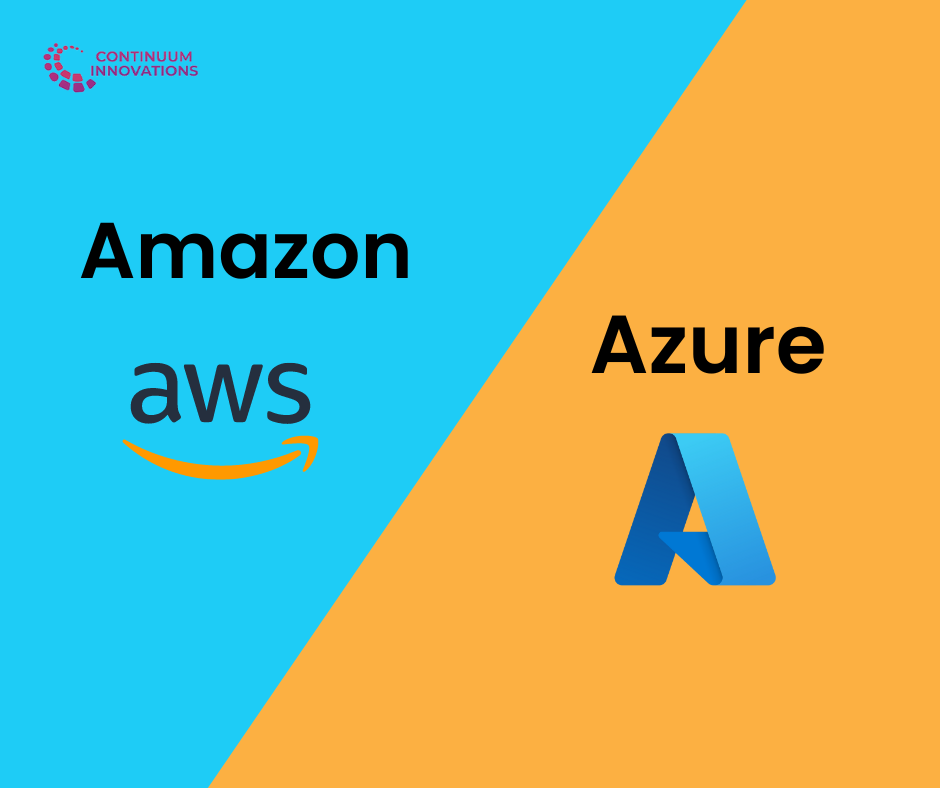Cloud computing refers to the on-demand distribution of remote data centers (the cloud) and computing services to increase the provisioning of resource flexibility, drive faster innovation, and help businesses gain from economies of scale.
In a nutshell, cloud migration services enables users to rent rather than buy IT infrastructure. Moreover, cloud computing primarily relies on two methods to enable cost-efficiency and standardization: a pay-as-you-go mode and a resource-sharing paradigm.
AWS by Amazon and Azure by Microsoft are cloud providers that offer services and functions distributed across multiple data centers. Both provide various similar core features when it comes to cloud computing capabilities. However, certain aspects make them differ from each other. Let’s learn a few things about them to understand the differences that make AWS and Azure stand apart.
What is Amazon Web Services (AWS)?
AWS is a subsidiary of the tech and e-commerce giant Amazon. Amazon Web Services include hundreds of solutions from data centers worldwide with millions of users across leading government agencies, large enterprises, and start-ups. It’s based on three service platforms, including SaaS, IaaS, and PaaS.
AWS cloud solutions provide quick results and save the time required to plan for IT infrastructure and servers. The cost-efficient service allows paying for only what is used without any long-term commitments or up-front expenses.
Businesses can use AWS to share large files online, send reliable and cost-effective transaction emails of large volumes, and host websites and apps easily. They’re also helpful in sharing and storing files that can be accessed remotely. AWS is also helpful in controlling load times and web traffic loads for better distribution with CDN.
What is Microsoft Azure?
Azure by Microsoft is another top-notch cloud computing platform that aids in the management of applications via data centers operated by Microsoft. The platform has an extensive toolkit that’s expanding over time to offer several cloud services, including computing, analytics, networking, and storage, to allow businesses to meet their demands in less time and at a lower cost. Azure is used in managing, building, and deploying applications, along with providing reliable and simple data storage on a huge scale.
Azure and AWS resemble each other in basic functionalities and features but differ significantly in other properties. Let’s check out some differences between the two renowned computing platforms. Azure Managed Service Provider will help you to utilize the azure platform at its best.
Key Differences between Azure and AWS
Storage
Azure employs the D-drive to offer block storage and temporary storage with VMs and Page Blobs. Files and Block Blobs serve as the object store. It supports NoSQL, relational databases, and Big Data with HDInsight and Azure tables. It also offers export-import, recovery, site recovery, and azure backup for archives.
AWS utilizes temporary storage for allocating when the instance is destroyed and started during the termination. It offers block storage to separate the instances. It also provides full support for NoSQL Big data and databases, Glacier for data archiving services, and S3 for Object storage.
Pricing Models
AWS impalements the pay-as-you-go model with per-hour charges. Purchasing instances can be on-demand, reserved, and on the spot. On-demand pricing model means paying for what’s used without any upfront costs.
The spot is based on the availability of extra capabilities when customers bid. Instances can also be reserved for one to three days without any upfront costs based on usage.
Azure also utilizes the pay-as-you-go model, but Microsoft offers short-term commitment plans with monthly charges or prepaid charges that are to be paid as per the minute.
User-Friendliness
AWS boasts multiple configurations and features. It offers flexibility, customization, and power features with support for many third-party integrations. Admins of Azure can simply integrate on-premises servers with cloud instances to create a hybrid environment.
Both clouding systems offer incredibly comprehensive features to users. However, a few differences remain. AWS is a relatively more affordable option, making it a popular choice for most first-time adopters. In contrast, Azure users are heavily influenced by the availability of the larger Microsoft ecosystem, including business apps, productivity tools, and Windows.
